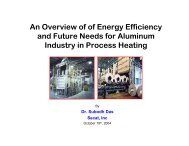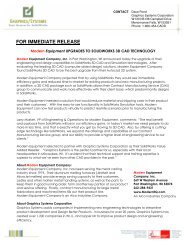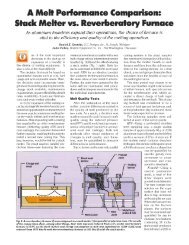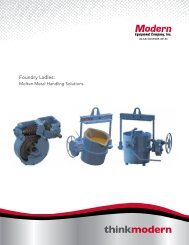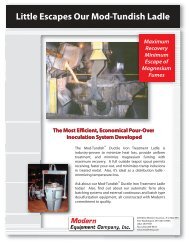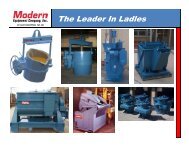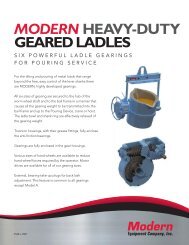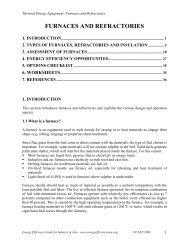ITP Metal Casting: Advanced Melting Technologies: Energy Saving ...
ITP Metal Casting: Advanced Melting Technologies: Energy Saving ...
ITP Metal Casting: Advanced Melting Technologies: Energy Saving ...
You also want an ePaper? Increase the reach of your titles
YUMPU automatically turns print PDFs into web optimized ePapers that Google loves.
1. Objective and Scope of the Study<br />
The objective of this study was to explore the concepts of breakthrough technologies in melting<br />
metals that may dramatically reduce the energy consumption. The study will guide the Industrial<br />
<strong>Technologies</strong> Program’s (<strong>ITP</strong>) <strong>Metal</strong> <strong>Casting</strong> subprogram in pursuing high-value R&D<br />
opportunities for enhancing energy efficiency of the metal casting industry.<br />
The study was undertaken as part of <strong>ITP</strong>’s Grand Challenge mission, a strategy seeking dramatic<br />
improvements in industrial energy efficiency. The study aims to provide a preliminary concept<br />
definition of “Grand Challenge” opportunities in the context of advanced melting technologies. It<br />
accomplishes its purpose by examining current and emerging melting technologies and<br />
discussing their technical barriers to scale-up issues and research needed to advance these<br />
technologies. It identifies potential avenues for improving melting efficiency, lowering metal<br />
transfer heat loss, and reducing scrap and improving yield.<br />
The scope of the study includes ferrous and non-ferrous melting applications in the metal casting<br />
industry, both in domestic and international markets. Although, the report focuses on metal<br />
melting applications, the melting technologies and developments discussed in this report are in<br />
general applicable to all furnaces and molten material processes, including primary aluminum,<br />
secondary aluminum, glass, iron and steel, and other industries.<br />
2. Introduction<br />
<strong>Melting</strong> of metals, glass, and other materials has been a vital manufacturing process for several<br />
thousand years, producing molten liquids that can be poured and solidified into useful shapes.<br />
Although the basic process continues to be the same, the utility of cast products has come a long<br />
way. The process that created tools and exotic goods for only a privileged few in the Bronze Age<br />
contributes to components used in over 90% of manufactured goods in our society today. Since<br />
the dawn of the industrial age, the tremendous progress in the melting process equipment, the<br />
range of molten materials, the chemistry and thermal controls, and the complexity of the finished<br />
products has enabled cast components in building a vast variety of products – automobiles,<br />
power generators, railroad cars, oil pipelines, military hardware, medical instruments, etc. to<br />
name just a few.<br />
The energy efficiency of any foundry largely rides on the efficiency of the melting process – a<br />
multi-step operation where the metal is heated, treated, alloyed, and transported into die or mold<br />
cavities to form a casting. The melting process is not only responsible for the energy<br />
consumption and cost-effectiveness of producing the castings (Exhibit 3), but it is also critical to<br />
the control of quality, composition, and the physical and chemical properties of the final product.<br />
1



